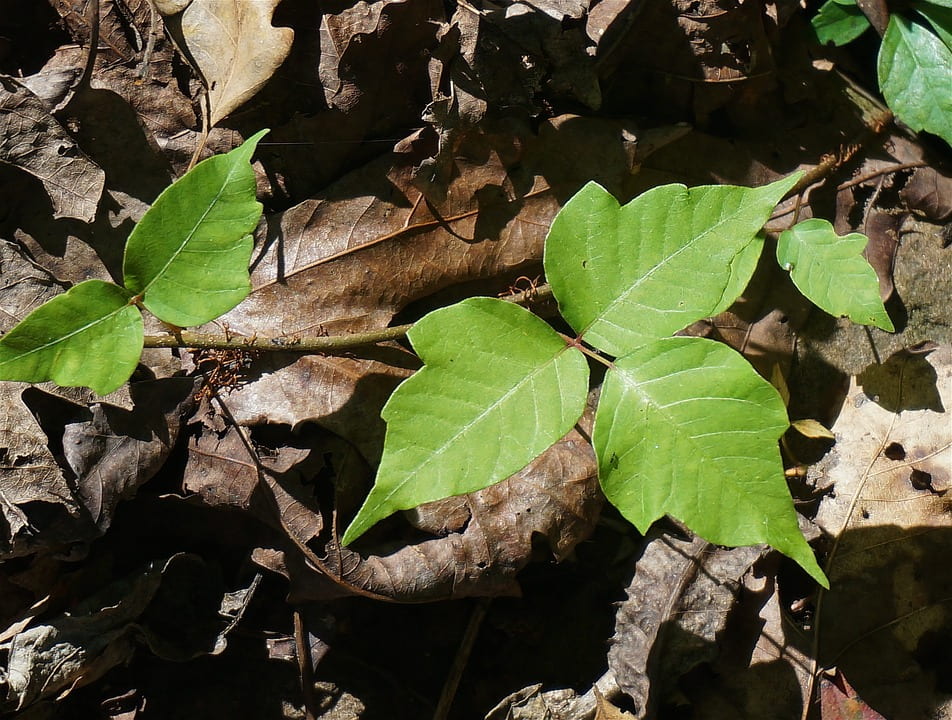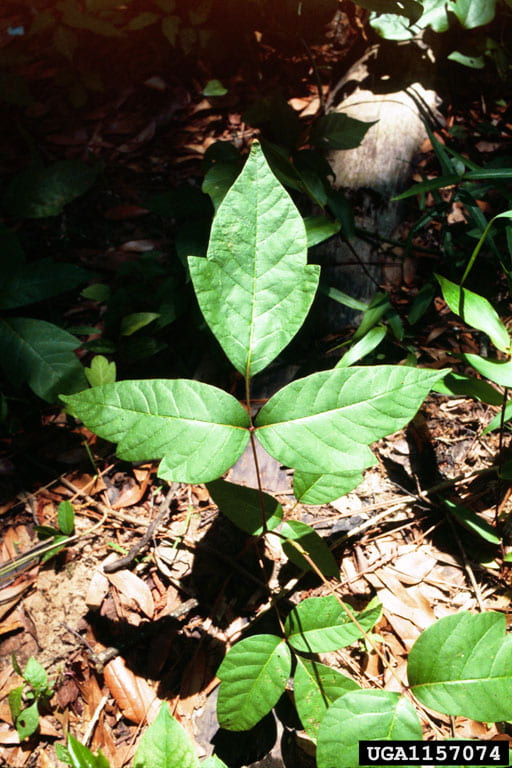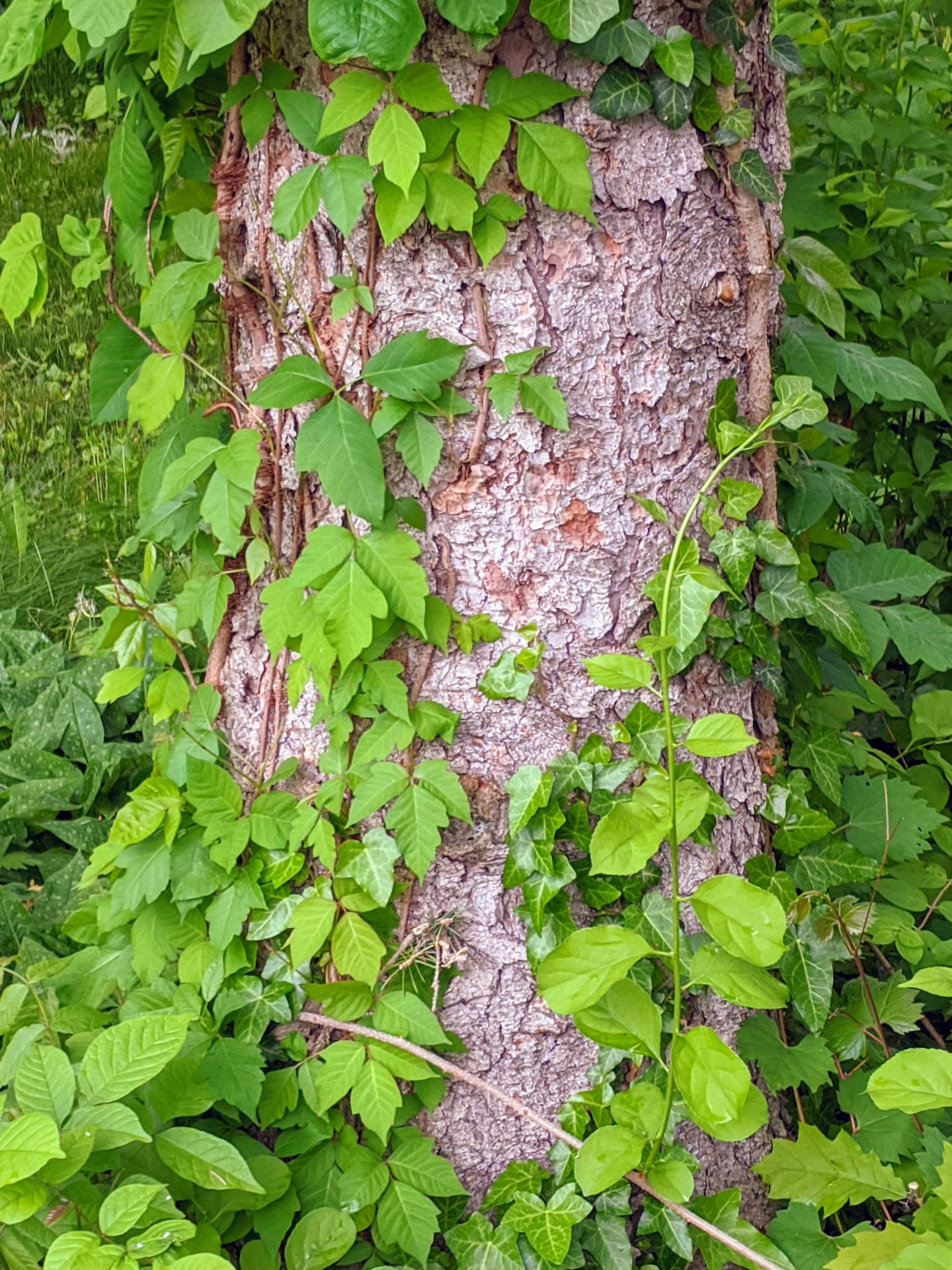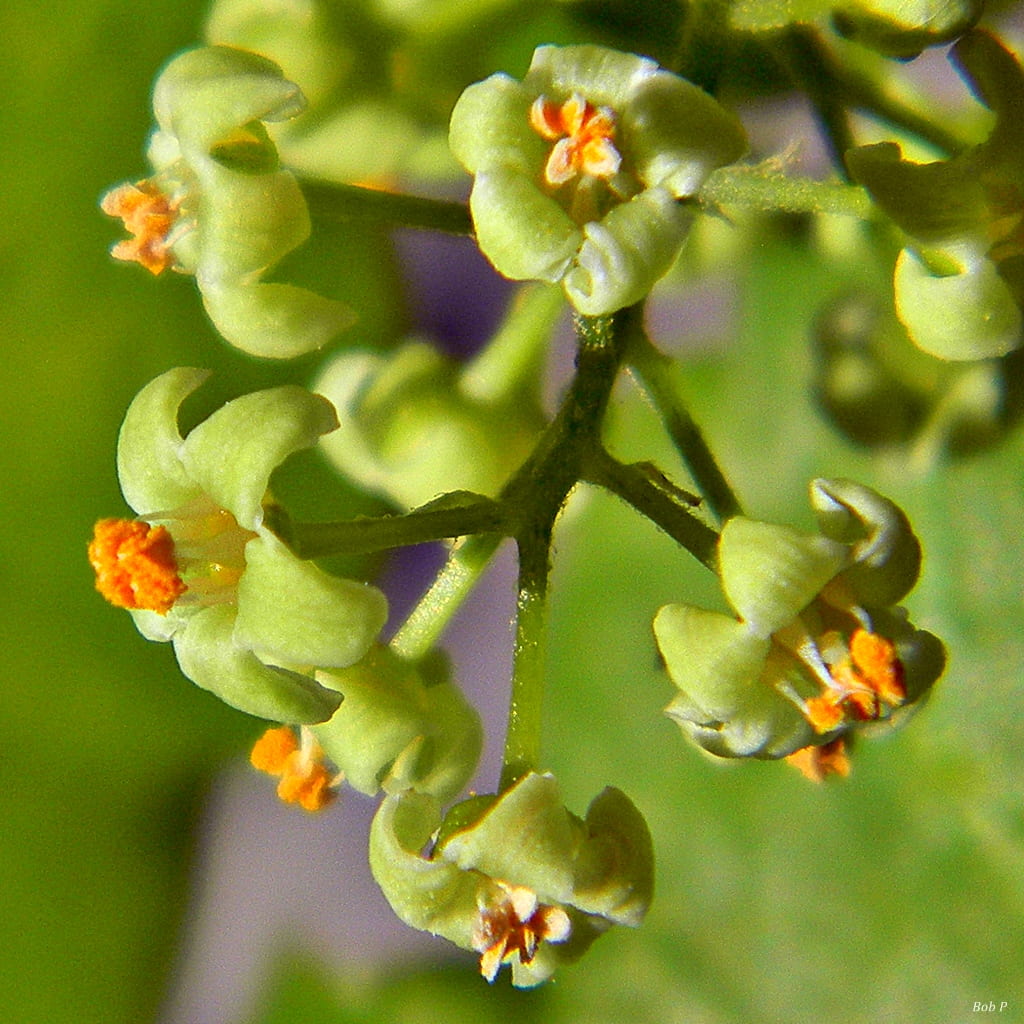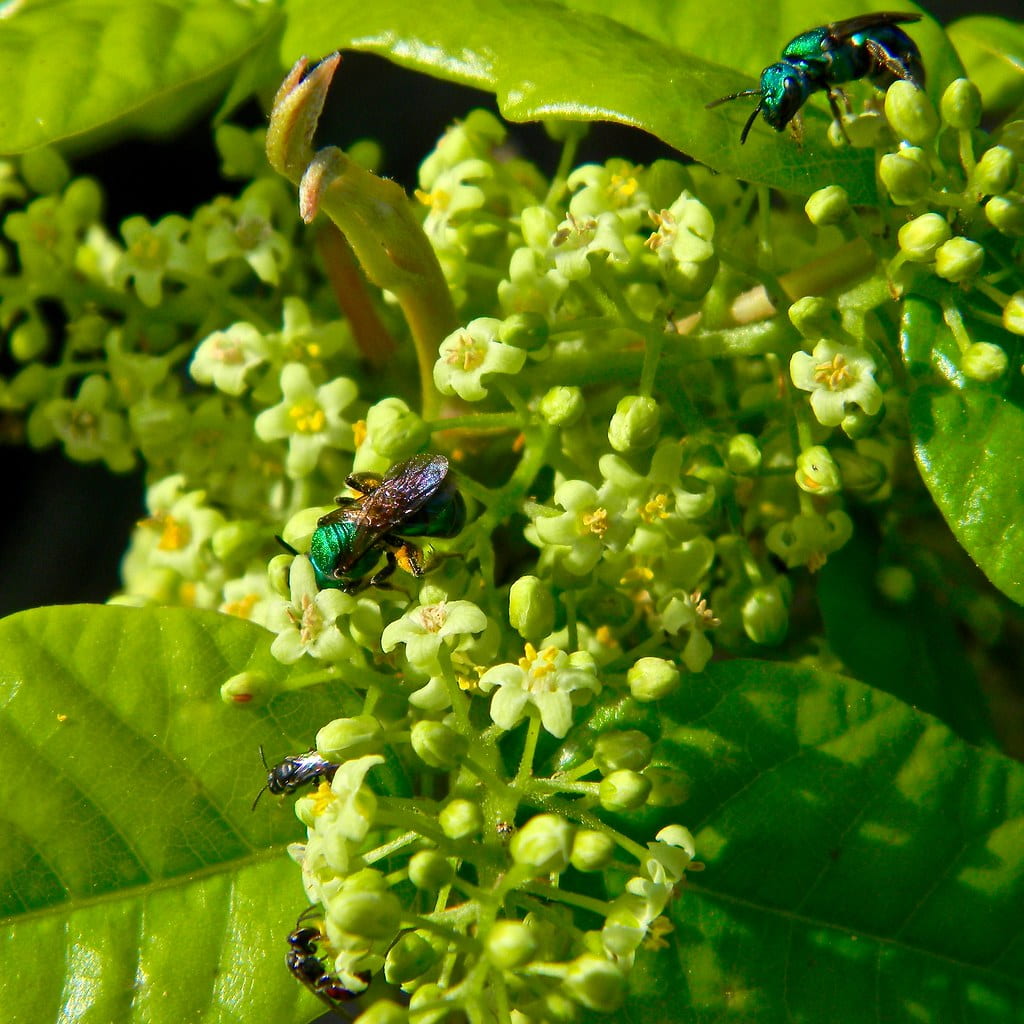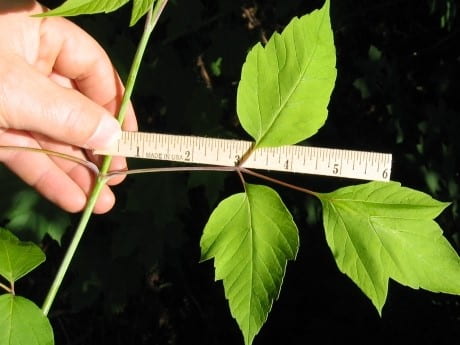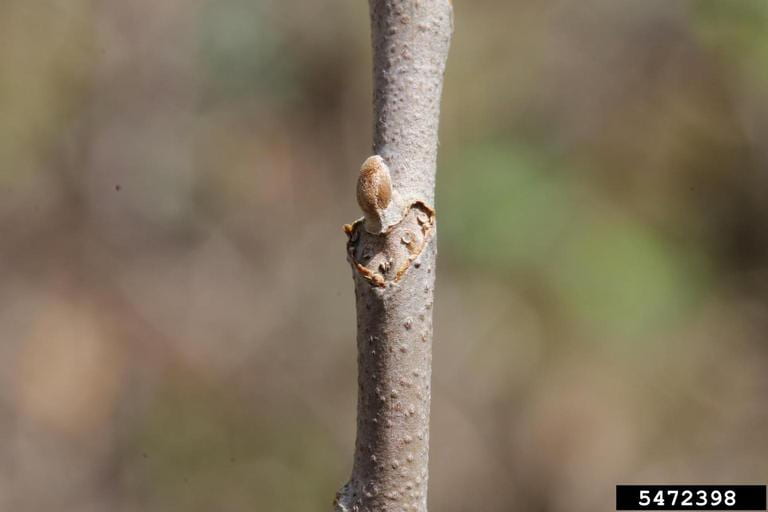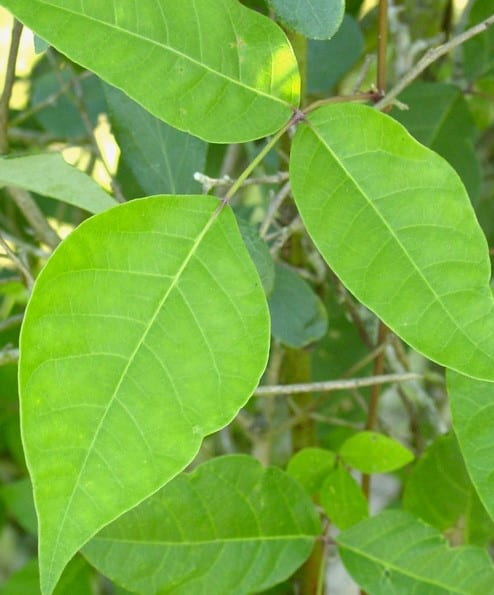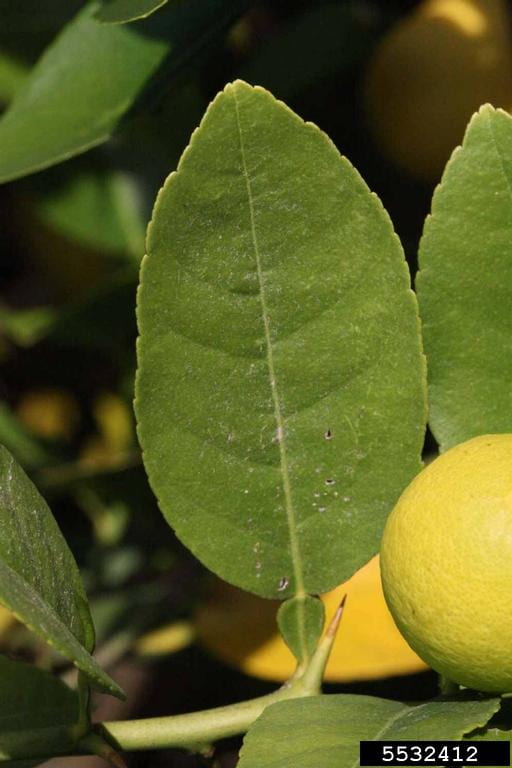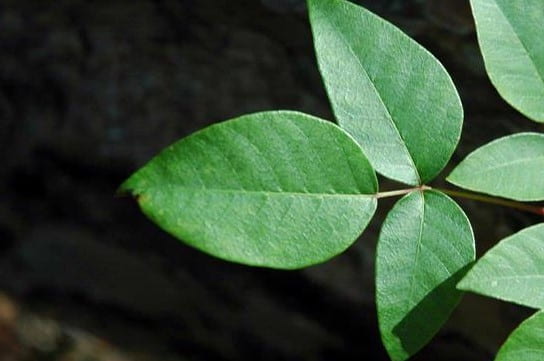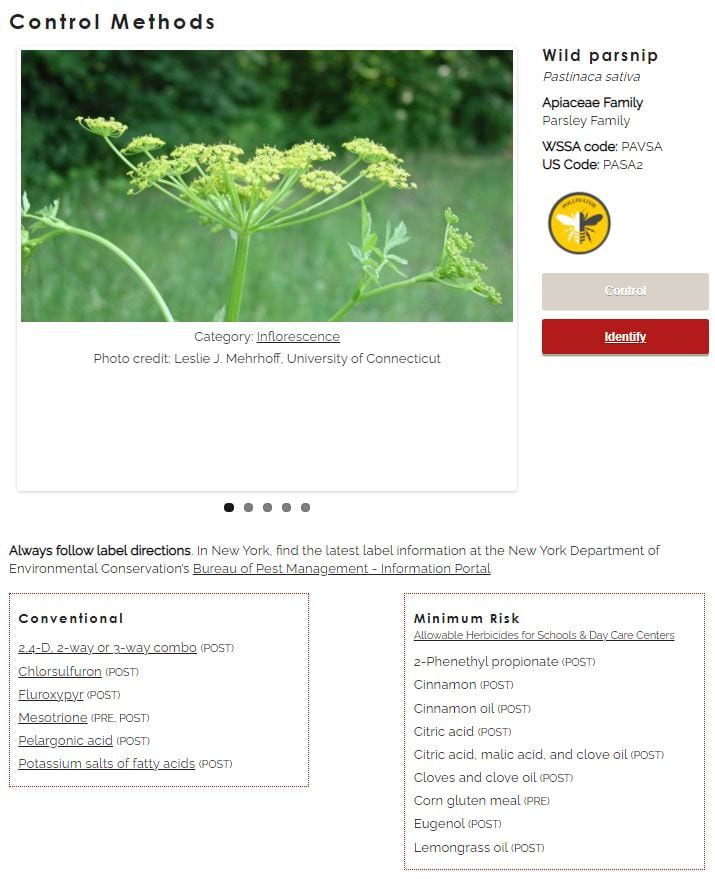Poison Ivy (Toxicodendron radicans) is a plant that contains resinous compounds, known as urushiol, in all parts of the plant that cause inflammation of the skin, blistering, and itching. It can invade landscapes, woodlands, and wetlands. The weed is native and widespread throughout the midwestern, northern, and eastern United States and parts of Canada.
Identification
Seedlings: Cotyledons are oval and the first true leaves are divided into three leaflets. The first emerging leaves are shiny and a bright green, sometimes with a red tinge. Stems are smooth and slender.
Leaves: Leaflets vary in shape, but are typically egg-shaped. Each leaf is comprised of 3 leaflets, which all lack hairs on the surface and usually has lobed edges. The shiny leaves have a red tinge in the dpring and then become more dull and green as they age throughout the summer before returning to a more red and/or brown color in the fall.
Mature plant: The woody stems have gray bark and are capable of rooting whenever they are in contact with soil. Plants can grow as a shrub up to 1.8 m (6′) tall or as a vine up to 46 m (150′) in length, wrapped around surrounding structures and/or trees.
Flower/seeds: Flowers are small and yellowish-green, and are present from May to June. They occur in clusters of 2 to 6 and typically arise on the axillary panicles, between the petioles and stem. Berries of the plant, which turn from green to white as they mature and are produced late summer, are consumed by birds. They each contain a single seed.
Similar Plants
Boxelder seedlings also have compound leaves of three leaflets. One distinction is that the compound leaflets are arranged on the stem opposite from each other, not alternating like on poison ivy.
Brambles have prickles on the stems, unlike poison ivy. The leaflets edges also have finer serrations than poison ivy.
Prickles on brambles stem. Image by Mari Hardel by Minnesota Department of Agriculture via Bugwood.org
Clematis plants have veins that are more curved than poison ivy and their leaves are opposite, not alternating.
The Indian Strawberry has serrated leaflet edges. Although the edges of poison ivy can be somewhat jagged, they are not serrated.
Serrated edges on Indian Strawberry plant leaf. Image by NCSC Herbarium, Citrus ID of USDA APHIS PPQ via Bugwood.org
Bean plants tend to have slightly fuzzy upper surfaces, whereas poison ivy surfaces have a slight waxy appearance and are never fuzzy. Beans also have fewer veins branching from the main central vein on the leaves.
Management
Chemical control
Click above for the chemical management of Poison Ivy and more by University of Georgia
Use this tool to look up the efficacy of herbicides on a particular weed species. For general guidance on weed control, get the latest edition of the Cornell Crop and Pest Management Guidelines.
Non-chemical control
Considering poison ivy cannot tolerate repeated tillage, cutting, or mowing, continuously clipping the plant close to the ground throughout the year for several years will eventually eradicate the weed. If managable at a large scale, the roots can be dug up and pulled out of soil, if the soil is wet. Since any part of the root left behind can sprout and give rise to new plants, the whole plant must be removed for effective use of this approach.
Do not use fire to manage the weed as the plant’s poisonous particles become airborne with the smoke when light on fire. These particles are also dangerous; they can cause irritation to the eyes, skin, and respiratory tract when breathed in.
See A Grower’s Guide to Organic Apples from Cornell for non-chemical weed control options in apple orchards.
References
Uva R H, Neal J C, DiTomaso J M. 1997. Weeds of the Northeast. Book published by Cornell University, Ithaca NY. The go-to for weed ID in the Northeast; look for a new edition sometime in 2019.
Cornell University Cooperative Extension and Horticulture Center of Demonstration and Community Gardens at East Meadow Farm, 2003. Home Grounds Fact Sheet-Poison Ivy and Poison Oak.
University of Missouri’s Integrated Pest Management page for Poison Ivy. Contains helpful descriptions for identification of the poison ivy plant, comparisons with similar plants, information regarding the plant’s toxin, and weed management.
University of Maryland Extension’s Home and Garden Information Center page for Identifying Poison Ivy.
University of Georgia Extension’s webpage for Controlling Poison Ivy in the Landscape
pixy.org. High quality free stock images.
University of Florida’s IFAS Extension page on identification descriptions for common poisonous plants, including poison ivy. Addition information on similar plants and helpful images.
Identification sheet on poison ivy by The Pennsylvania State University College of Agriculture. Includes seedling characteristics, biology, and similar species.
Peck, G M and I A Merwin. A Grower’s Guide to Organic Apples. Covers organic weed control methods for organic apple orchards.
Breth, D I and E Tee. 2016. Herbicide AI by Weed Species. This tool allows you to look up the efficacy of an herbicide active ingredient on a particular weed species.



